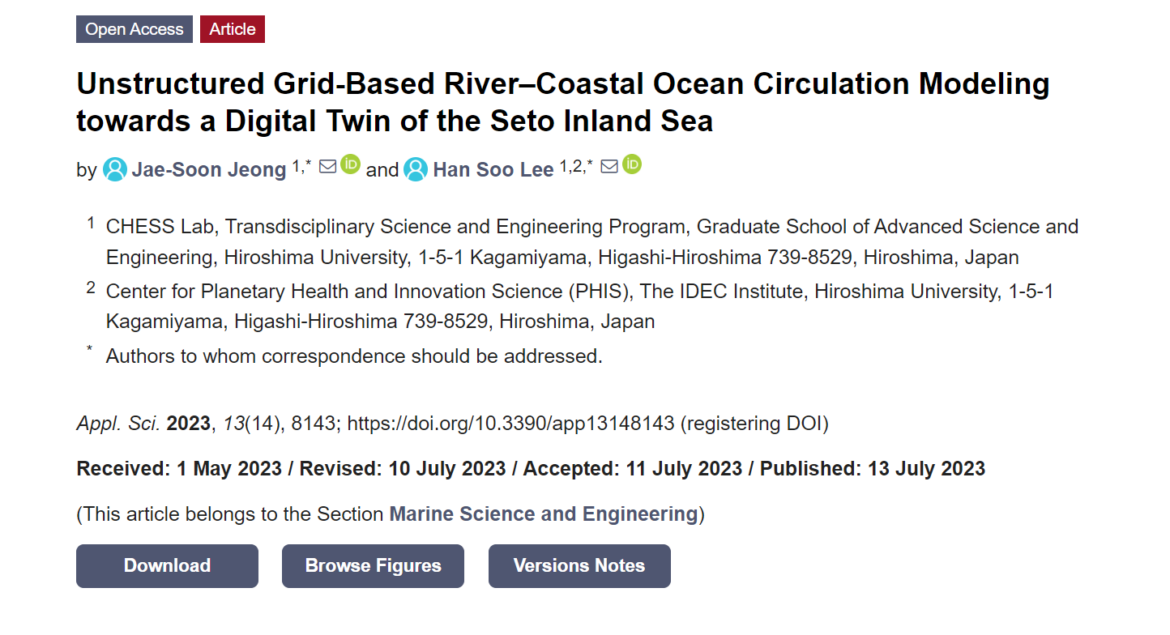Congratulations.
Jeong J-S*, and Lee HS*. 2023. Unstructured grid-based river-coastal-ocean circulation modelling towards a digital twin of the Seto Inland Sea. Appl. Sci. 13(14): 8143. Open access
Abstract
As computational techniques advance, the scope of digital twins (DTs) is expanding to encompass entire cities, oceans, or even the Earth. Digital twins of oceans can provide highly comprehensive insights and predictions, thus enabling better-informed decision-making regarding ocean-related activities and management. Here, a numerical model of the Seto Inland Sea (SIS), Japan, was built as a basis to establish a digital twin of the SIS. Spatially varying filtering parameters and grid resolutions were applied to facilitate the robust and accurate simulation of coastal and oceanic processes even under varying extreme conditions. The modeling results were validated using observational datasets from forty-two tidal stations, one mooring system, and thirteen water thermometers. The results represented tidal variations, with NRMSE values below 0.15 and R2 values exceeding 0.87 at all tidal stations. The NRMSE and R2 values for currents were approximately 0.14 and 0.76, respectively. The model reproduced the extreme storm surge event causing a sea level rise of 1.5 m near Osaka City resulting from Typhoon Jebi in 2018. The model was shown to enable analyses of complex circulations and hazards in the SIS by accurately replicating barotropic and baroclinic processes. After additional modules are added, this model will serve as a basis for constructing a digital twin of the SIS.
Keywords:
Seto Inland Sea; SCHISM; unstructured grid; seamless modeling; digital twin; storm surge


